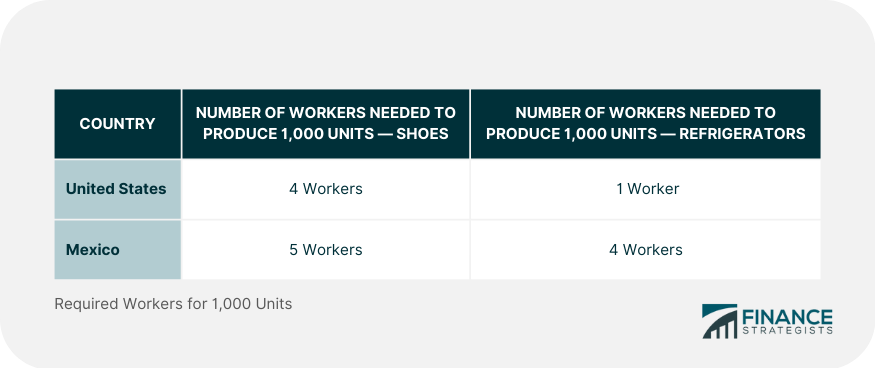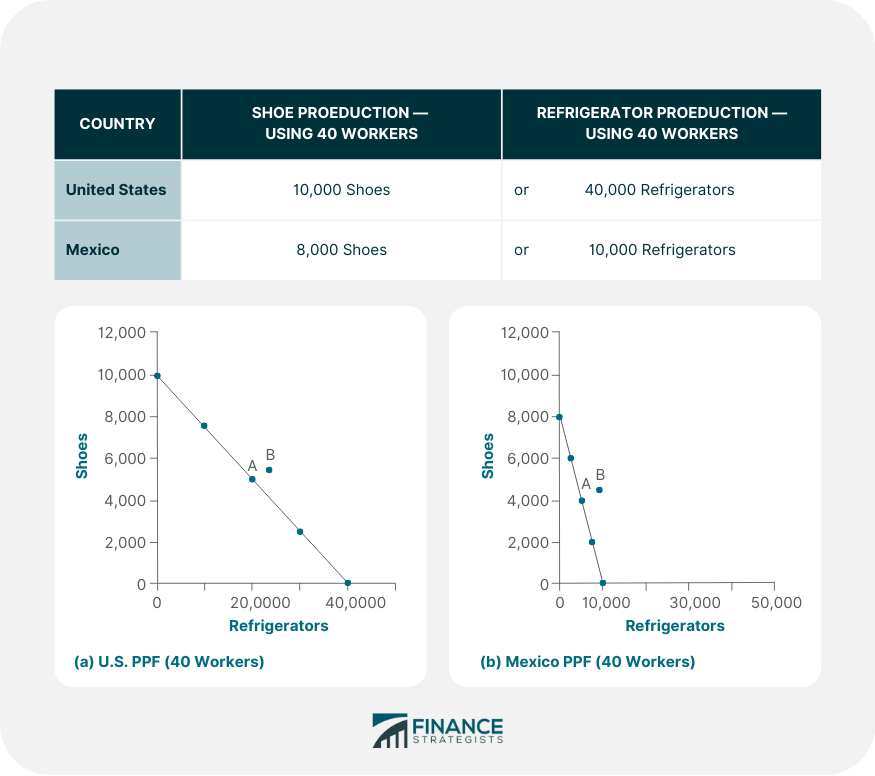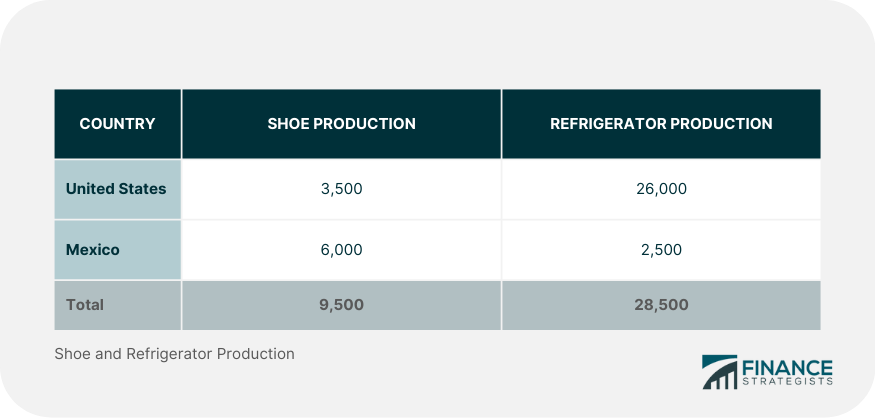Absolute advantage refers to how a company, country, or region produces a greater quantity of a product while maintaining the amount of time it takes to produce the product. When there is absolute advantage, the same quantity of goods are produced using a lesser quantity of inputs than another company. This increases competition between companies, and can be advantageous for trade. It is important to note that absolute advantage looks into the efficiency of production for a single product. If a company has a lower absolute advantage, it can produce products and services at a lower absolute cost per unit, which uses a small number of inputs, or possibly a more efficient process than another company that produces the same good or service. The unit cost is a crucial measure to determine operational analysis of a company. Analyzing unit cost is an effective way to determine if the company is producing content efficiently. The absolute advantage matters because it determines if a producer can provide goods or services in greater quantity for the same or lower cost than competing producers. Additionally, absolute advantage is an effective basis for gains from trade between companies who produce different goods with different absolute advantages. Specialization, division of labor, and trade with producers who have different absolute advantages leads to more gains than production in isolation. It is also related to comparative advantage, which opens up more widespread opportunities for gains from trade, as well as division of labor. Adam Smith first developed the idea of absolute advantage in his book, "The Wealth of the Nations." He used this idea to demonstrate how countries that specialize in producing and exporting certain goods gain from trade with other countries. In "Wealth of the Nations," Smith uses labor as the only input. Absolute advantage is determined by comparison of labor productiveness, so it is possible for a party to have no absolute advantage. There are several good examples of this in the Chinese economy and the Canadian Economy. The Chinese economy exports low-cost manufactured goods, and takes advantage of their low unit labor costs. The Canadian economy is rich in low cost land, and has an absolute advantage in agricultural production. Comparative advantage looks at the reduction of opportunity cost, which is the potential benefit gained by choosing to produce more of one product instead of producing the maximum amount of both products a country has absolute advantage in. In the chart below, we see the United States has the absolute advantage in both refrigerators and shoes. Absolute advantage examines the productivity of workers in each country, answering the question "how many inputs are needed to produce shoes in Mexico?" It identifies the good where the absolute advantage is relatively larger, or where the productivity disadvantage is smaller. Comparative Advantages help countries consider possibilities for trade, and how to maximize production for profit. In this situation, the United States has a higher comparative advantage of shoes over refrigerators (1 worker in the US versus 4 in Mexico), and Mexico has a higher comparative advantage of shoes (5 workers in Mexico versus 4 in the US). If both countries were to continue with their production rates, using 40 workers per good, the United States would produce 10,000 shoes and 40,000 refrigerators. Mexico would produce 8,000 shoes, and 10,000 refrigerators, shown in the chart below. If point A on each graph which is where countries start producing and consuming before trade. At this point, the United States produces 20,000 refrigerators and 5,000 pairs of shoes. Mexico produces 4,000 pairs of shoes and 5,000 refrigerators, for a total of 9,000 shoes produced, and 25,000 refrigerators produced. If each country were to transfer workers toward their area of comparative advantage, this would shift slightly. If the US transferred six workers away from shoes to work on refrigerators, the shoe production decreases by 1,500 units (6/4 x 1,000), and refrigerator production increases by 6,000 (6/1 x 1,000). If Mexico moves toward their area of comparative advantage, and transfers 10 workers to work on production of shoes, the production of refrigerators decreases by 2,500 (10/4 x 1,000), and production of shoes increases by 2,000 pairs (10/5 x 1,000). This leads to a greater production of goods overall, as shown in the chart below. This example shows that even though the United States has an absolute advantage in both goods, both countries can benefit from increased production in their area of comparative advantage. The United States will then export refrigerators, and import shoes.Theory of Absolute Advantage
Define Absolute Advantage in Economics
What Is the Origin of Absolute Advantage?
Absolute Advantage Example

Comparative advantage asks the question in a different way, instead focusing on the output it takes to produce goods in a country.

Absolute Advantage FAQs
Absolute advantage refers to how a company, country, or region produces a greater quantity of a product while maintaining the same amount of time it takes to produce the product.
The absolute advantage matters because it determines if a producer can provide goods or services in greater quantity for the same or lower cost than competing producers.
In his book, The Wealth of the Nations, Adam Smith used this idea to demonstrate how countries that specialize in producing and exporting certain goods gain from trade with other countries.
Absolute Advantage looks into the efficiency of production for a single product.
China enjoys a low-cost manufactured goods advantage due to low labor costs, while Canada's low land cost provides an agricultural production advantage.
True Tamplin is a published author, public speaker, CEO of UpDigital, and founder of Finance Strategists.
True is a Certified Educator in Personal Finance (CEPF®), author of The Handy Financial Ratios Guide, a member of the Society for Advancing Business Editing and Writing, contributes to his financial education site, Finance Strategists, and has spoken to various financial communities such as the CFA Institute, as well as university students like his Alma mater, Biola University, where he received a bachelor of science in business and data analytics.
To learn more about True, visit his personal website or view his author profiles on Amazon, Nasdaq and Forbes.















